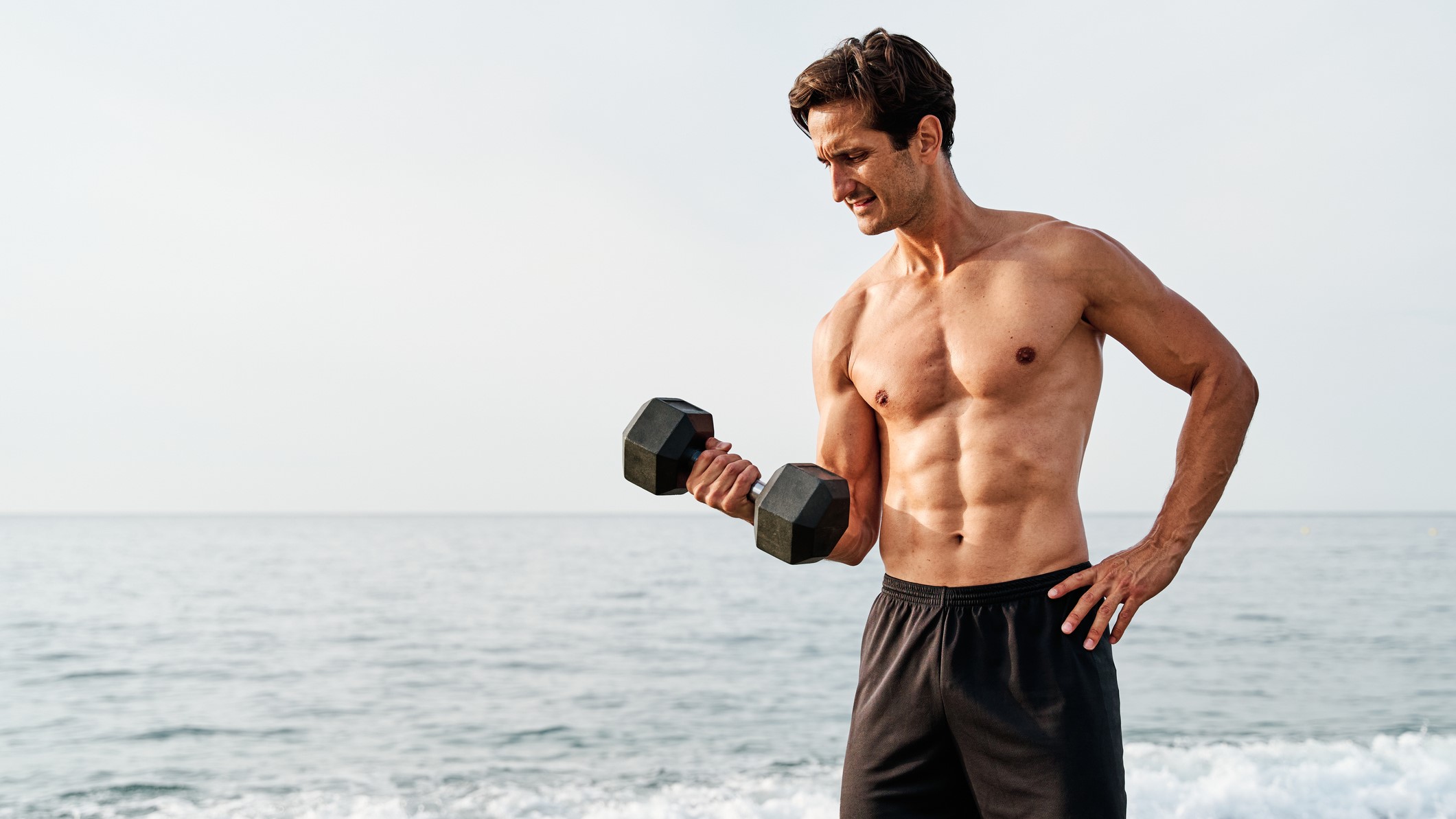Forget the gym — all you need is 1 dumbbell and 6 exercises for a full-body workout
Ready for a full-body workout, try this.

You don’t need to spend hours in the gym to get a good workout. If you’re short on time and are looking for a full-body workout that doesn’t require a lot of equipment, we’ve got you covered. The workout, created by personal trainer Sara Kathryns, repeats six different exercises and only uses one dumbbell to help you work up a sweat. Read on to find out more.
If you’re still working out from home, investing in a set of the best adjustable dumbbells can make all the difference to your workouts. At the twist or click of a button, you can easily adjust the weight you’re lifting, negating the need for multiple pairs of dumbbells in your home. When selecting the right weight for your workout, remember that the dumbbell should make the exercise challenging by the final few reps, but should never compromise your form.
As always, if you’re new to exercise, or you’re returning to exercise following an injury, it’s a good idea to check your form with a personal trainer.
The full-body, one-dumbbell workout
Ready to get started? Here’s the workout, which you repeat for four rounds:
A post shared by Sara Kathryns (@sarakathryns)
A photo posted by on
Squat tricep extension: 12 reps
Holding a dumbbell in both hands above your head. Keeping your arms outstretched, squat down with your feet shoulder-width apart, bending at the knees. Pause at the bottom of the movement, then drive through your feet to stand back up. As you do, lower the dumbbell behind your head for a triceps extension. That’s one rep.
Lateral lunge to lateral raise: 12 reps on each side
For this exercise, hold a dumbbell in one hand, with the other on your hip. Step the opposite leg to the hand holding the dumbbell out to one side, and lower down into a lateral lunge, squeezing your core and your glutes. As you lunge, lower the dumbbell down towards your ankle, then as you push through the floor to your starting position, complete a lateral raise, lifting the dumbbell out to the side of your body. Do 12 reps on each side.
Underhand grip row: 12 reps
If you have a set of dumbbells, hold one in each hand for this exercise, if not, hold the dumbbell with both hands. Holding the dumbbells in an underhand grip — with your palms facing upwards, squeeze your shoulder blades together and row the dumbbells up towards your chest, then extend your arms back to your starting position.
Get instant access to breaking news, the hottest reviews, great deals and helpful tips.
Overhead cursty lunge: 20 reps
Hold a dumbbell above your head with both hands. Engage your core, and complete a curtsy lunge, crossing one leg behind the other, and bending your knees, lowering your hips until your left thigh is nearly parallel to the floor. Make sure you keep your core engaged, keeping your torso upright, keep alternating legs, completing 10 on each side.
Squat dumbbell chest press: 12 reps
Holding the dumbbell with both hands against your chest, stand with your feet shoulder-width apart and bend at the knees to squat down. As you lower down into a squat, extend your arms and press the dumbbell away from you into a chest press. As you push down into your feet to stand back up to your starting position, bring the dumbbell back to your chest. That’s one rep.
Sit up to squat: 12 reps
For this exercise, hold a dumbbell in both hands against your chest and bend your knees into a squat. From here, sit back, extend your legs out and away from your body, and do a sit-up, engaging your core. Then reverse the movement to get back to a standing position.
All of the exercises in this workout are compound exercises, making this a great routine for targeting all of the major muscle groups in the body. Compound exercises work multiple muscle groups at the same time, compared to isolation exercises, which strengthen a single muscle group at a time. As well as being an effective use of your time, compound exercises can help you burn more calories when you work out, elevate your heart rate and improve your flexibility and strength.
Another huge benefit of compound exercises is that they can improve intermuscular coordination. This means how effectively the muscles work together — in an exercise like a squat, the hip is moving on all three planes, meaning the muscles around the hip have to work together. By praciticing compound movements, you are strengthening these muscles.
More from Tom's Guide
- I did 70 plank tucks every day for a week - here are my results
- The best running shoes you can buy now
- I did knee planks every day for a week — here's what happened

Jane McGuire is Tom's Guide's Fitness editor, which means she looks after everything fitness related - from running gear to yoga mats. An avid runner, Jane has tested and reviewed fitness products for the past five years, so knows what to look for when finding a good running watch or a pair of shorts with pockets big enough for your smartphone. When she's not pounding the pavements, you'll find Jane striding round the Surrey Hills, taking far too many photos of her puppy.
